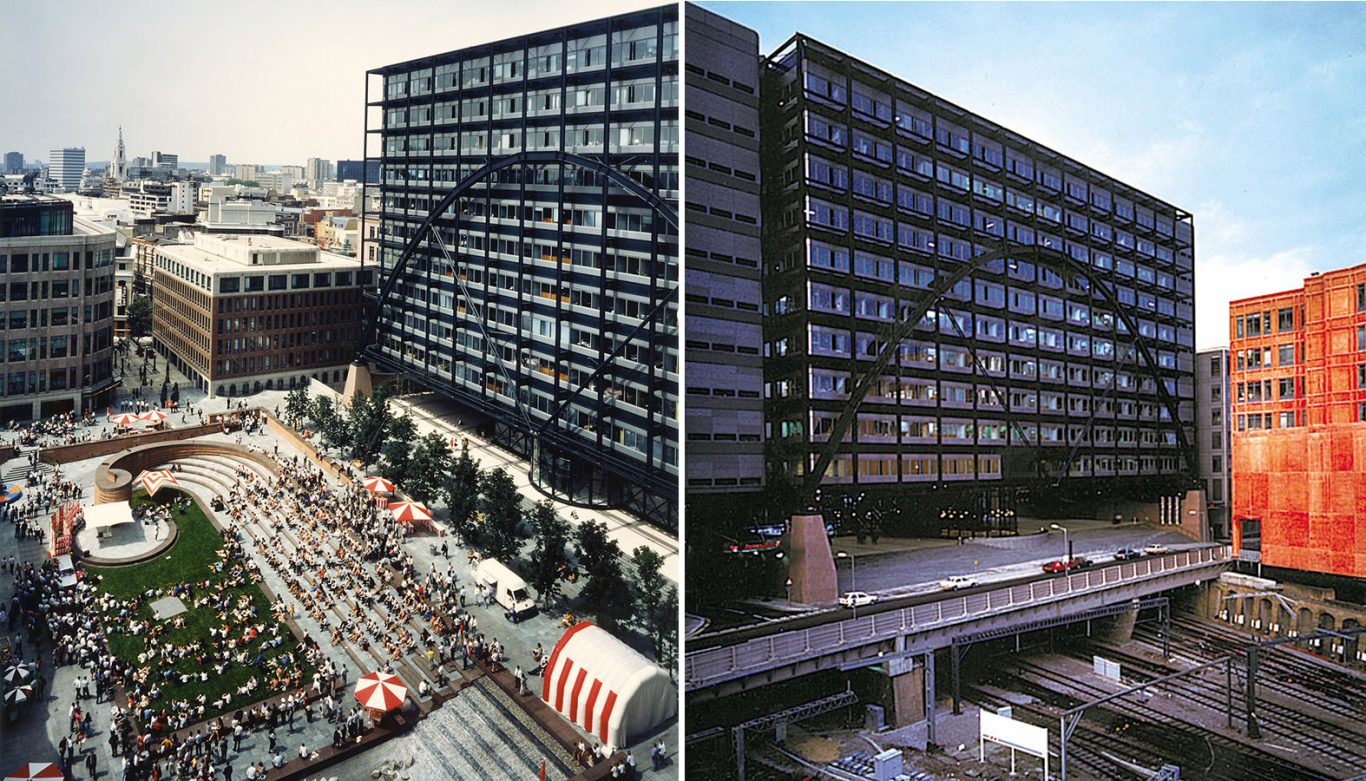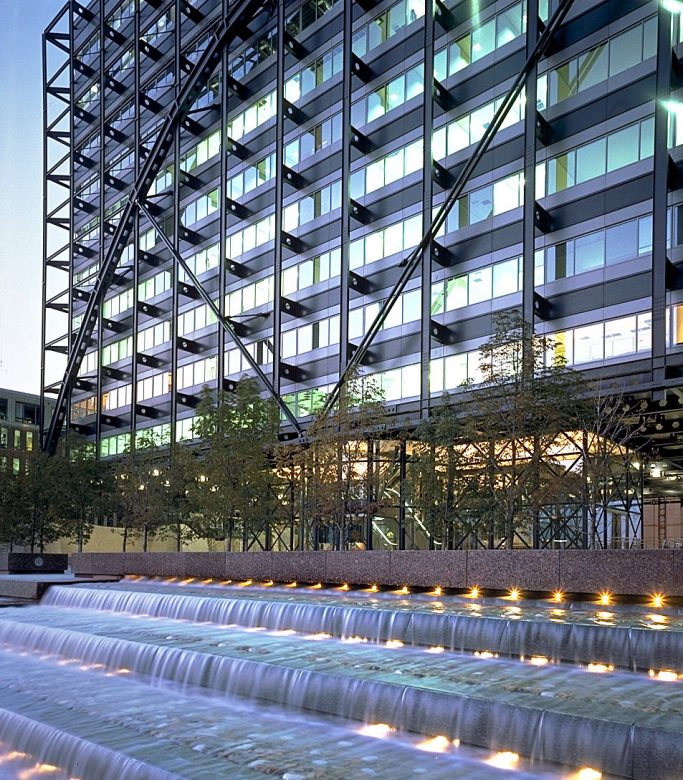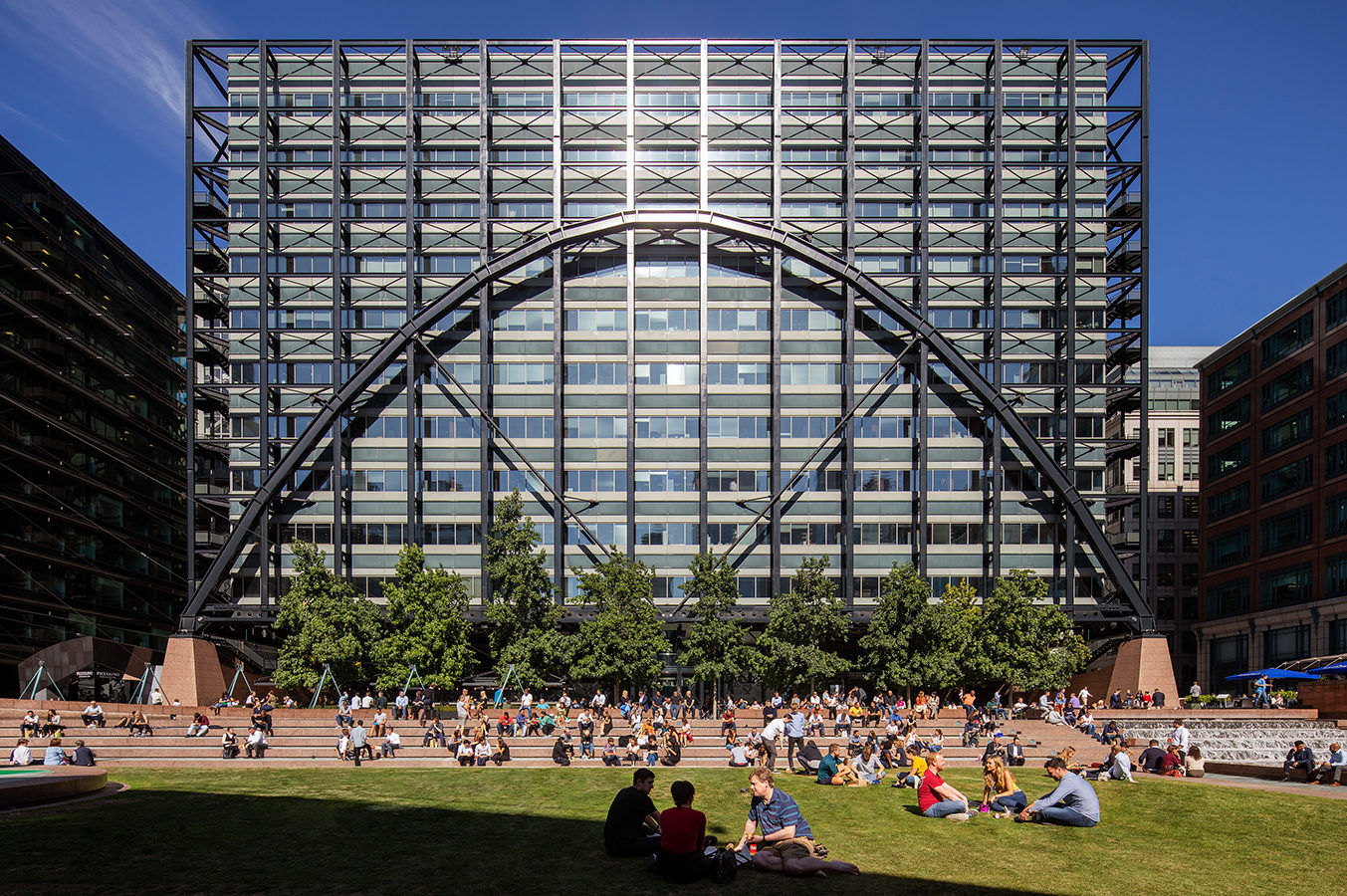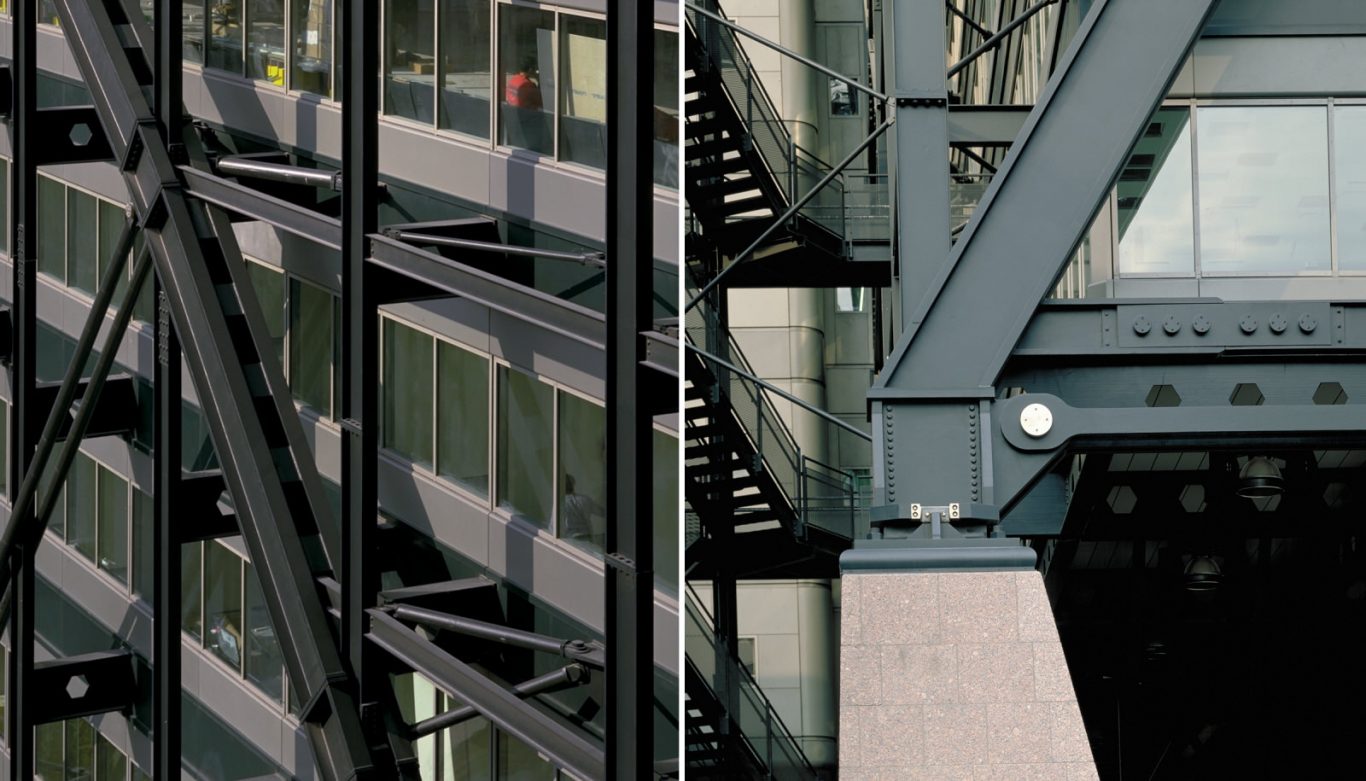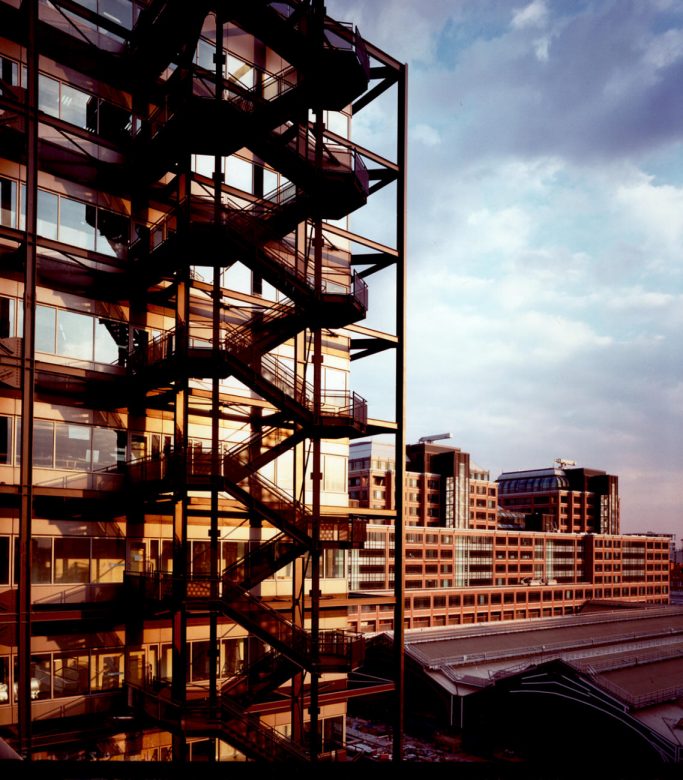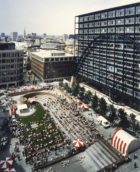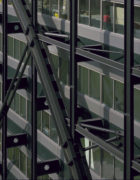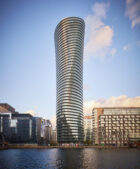When it opened in 1990, London’s Exchange House became an instant classic, one that exemplified a core belief at SOM that virtually all of the world’s cities can generate new urban space. Here, the space was found by utilizing air rights and applying sophisticated engineering techniques to the architectural design.
Exchange House is a building-bridge hybrid: Its form and structure are built on an exposed steel bridge spanning a 78-meter-long rail yard. A platform arches over the train tracks, enabling the Liverpool Street Station to function normally underneath a 10-story office building. Four parallel structural arches, two expressed externally and two internally, provide the building’s skeleton, enabling column-free interior spaces.
The project amounted to one of the largest net additions of new infrastructure in one of the world’s densest cities. It also catalyzed the development of new streetscapes, lawns, bridges, and plazas in the area. Exchange House is located within the Broadgate Development, a mixed-use district master planned by SOM. The building was developed by Rosehaugh Stanhope Developments in partnership with British Rail. Today, it is jointly owned by British Land and GIC.
